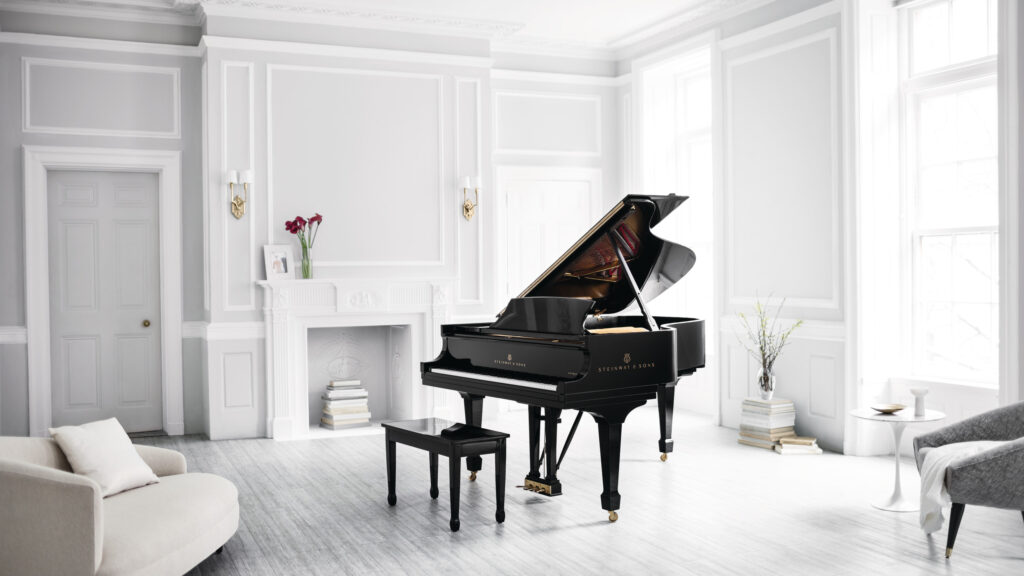When faced with the daunting task of moving a piano, many people wonder if they need to use a dolly. Pianos are heavy and bulky instruments, making them difficult to move without proper equipment or assistance. In this article, we will explore whether using a dolly is necessary when moving a piano.
We will discuss the different types of dollies available, their capabilities and limitations, as well as alternative methods for moving a piano. Additionally, we will provide tips and precautions to take when using a dolly to ensure the safety of yourself and your piano.
What is dolly and why is it used?
A dolly, also known as a hand truck or trolley, is a type of equipment used to transport heavy objects. It typically consists of two wheels, a flat platform for holding the object, and handles for pushing or pulling. Dollies come in various shapes and sizes, designed for different purposes such as moving boxes, furniture, appliances, and, of course, pianos.
Dollies are used to alleviate the physical strain of carrying heavy objects. By using a dolly, the weight of the object is transferred from your arms and back to the wheels, making it easier to maneuver and transport. This is especially beneficial when moving large and bulky items like pianos that cannot be carried by one person alone.
Dolly is necessary when moving a piano
The short answer is yes, a dolly is necessary when moving a piano. Pianos can weigh anywhere from 300 to over 1000 pounds, depending on the type and size. Without a dolly, it would be nearly impossible for an individual or even a group of people to move a piano safely and efficiently.
Furthermore, pianos are delicate instruments with sensitive internal mechanisms that can easily get damaged if not handled properly. Using a dolly reduces the risk of dropping or jostling the piano during the moving process.
However, it should be noted that while using a dolly is highly recommended, it is not always necessary for moving a piano. There are cases where alternative methods may be more suitable, such as hiring professional movers or using specialized equipment like a piano trolley or crane.
Types of dollies for moving pianos
Here are some common types of dollies used for moving pianos:
Standard Dolly:
The standard dolly, also known as the two-wheel dolly or hand truck, is the most basic type of dolly used for moving pianos. It typically consists of two wheels, a flat platform, and handles for pushing or pulling.
Standard dollies are designed to carry heavy objects in an upright position, making them suitable for moving vertical pianos such as upright and spinet pianos. The flat platform of the dolly is placed under the bottom edge of the piano, while the handles are used to tilt and guide it towards its destination.
Due to their design, standard dollies may not be suitable for moving concert grand piano as they cannot support the weight of the instrument evenly. This can cause damage to the legs or pedals of the piano.
Appliance Dolly:
Another type of dolly commonly used for moving pianos is the appliance dolly. As the name suggests, this type of dolly is designed for moving heavy household appliances such as refrigerators, washing machines, and yes, pianos.
Appliance dollies are similar to standard dollies in terms of design, but they have a wider base and stronger straps or belts to secure the object being moved. This makes them suitable for moving both vertical and grand pianos, as they can evenly distribute the weight of the instrument.
Moreover, some appliance dollies come with additional features such as stair climbers or pneumatic tires that make it easier to navigate through tight spaces or uneven terrain.
Furniture Dolly:
A furniture dolly is a type of dolly commonly used for moving heavy and oversized pieces of furniture. It typically consists of four wheels, a flat platform, and two handles for pushing or pulling.
While not specifically designed for pianos, furniture dollies can be used as an alternative to standard or appliance dollies when moving vertical pianos. The flat platform provides a stable base for the piano, and the four wheels make it easier to maneuver around corners or obstacles.
Due to its design, a furniture dolly may not be suitable for moving grand pianos as it cannot evenly distribute the weight of the instrument. Additionally, it may be challenging to secure the piano properly on a furniture dolly, increasing the risk of damage during transportation.
Alternative methods for moving a piano
If using a dolly is not an option, there are alternative methods for moving a piano that may be more suitable. These include:
Hiring professional movers:
Hiring experienced and trained professionals to move your piano is the safest and most efficient way of transporting it. They have the necessary equipment and expertise to handle all types of pianos without causing any damage.
Moreover, professional movers usually come in a team, making it easier to distribute the weight of the piano evenly and navigate through tight spaces. They may also provide additional services such as disassembling and reassembling the piano if needed.
Using specialized equipment:
In addition to dollies, there are other specialized equipment designed for moving pianos, such as a piano trolley or crane. These tools are designed to safely and efficiently transport pianos, even in challenging situations such as narrow staircases or balconies.
However, using specialized equipment may require some experience and training, so it is best to leave it to professionals unless you have prior knowledge and skills in using them.
Tips for Moving a Piano with a Dolly
Here are some tips to keep in mind when using a dolly to move a piano:
Prepare the piano:
Before using a dolly, make sure to prepare the piano for transportation. This includes securing all lids and parts of the piano, removing any loose or fragile items from inside, and wrapping it in protective material to prevent scratches or damage.
Use proper lifting techniques:
When loading the piano onto the dolly, make sure to use proper lifting techniques. Bend your knees and keep your back straight to avoid straining or injuring yourself. Ask for assistance if needed, as pianos can be heavy and awkward to lift.
Secure the piano on the dolly:
Properly secure the piano to the dolly using straps or belts. This will prevent it from tipping over or sliding off during transportation.
Plan the route:
Before starting the moving process, plan the route to your desired location. Make sure there are no obstacles or tight spaces that could be challenging to navigate with a dolly.
Move slowly and carefully:
When using a dolly, it is important to move slowly and carefully. Avoid jerky movements or going over bumps too quickly, as this can cause the piano to shift or fall off the dolly.
Have a spotter:
Having someone walk alongside the piano as it is being moved can help to guide and stabilize it, especially when going up or down stairs. This person can also act as a lookout for any potential hazards or obstacles along the way.
Factor to consider when choosing a piano moving dolly
When choosing a dolly for moving your piano, there are several factors to consider. These include:
Weight capacity:
Make sure to choose a dolly with the appropriate weight capacity for your piano. Most standard dollies have weight capacities of 500-1000 pounds, while appliance dollies can handle up to 1200 pounds. Be sure to check the weight of your piano before purchasing a dolly.
Size and design:
Consider the size and design of your piano when choosing a dolly. Vertical pianos may require a standard or furniture dolly, while grand hire professional piano movers may need an appliance dolly or specialized equipment such as a piano trolley.
Maneuverability:
For ease of transportation, choose a dolly with good maneuverability. This is especially important if you need to move the piano through tight spaces or around corners.
Durability:
Invest in a high-quality and durable dolly that can withstand the weight and movement of your piano. It should also have secure straps or belts to keep the piano in place during transportation.
Renting vs. purchasing:
If you only need a dolly for a one-time move, consider renting one instead of purchasing. This can save you money and storage space in the long run.
FAQs
Do you need a piano dolly to move an upright piano?
Explore the necessity of using a piano dolly when moving an upright piano and understand how professional piano movers ensure a secure and damage-free transportation process. Learn about the specific considerations when moving the piano upstairs or downstairs, ensuring the safety of both the instrument and the surroundings.
Is it essential to use a piano dolly when relocating a baby grand piano?
Understand the importance of using a piano dolly when relocating a baby grand piano and how professional piano movers manage the complexities of moving both an upright piano and a baby grand piano. Learn about the specialized piano dollies and piano boards used by professionals to ensure the safe transportation of these valuable musical instruments.
Do professional piano movers use piano dollies when moving concert grand pianos?
Explore whether professional piano movers utilize piano dollies when moving concert grand pianos and understand the steps and precautions taken to protect piano legs and the overall integrity of the musical instrument. Learn about the use of moving blankets and other measures to ensure a secure and damage-free relocation of this valuable and large-sized piano.
Conclusion:
Moving a piano can be a challenging and delicate process. Using the right tools and techniques is crucial to ensure the safety of both the piano and the movers. While dollies are commonly used for transporting upright pianos, there are alternative methods such as hiring professional movers or using specialized equipment that may be more suitable in certain situations.
If using a dolly is your preferred method, make sure to choose one with the appropriate weight capacity and maneuverability for your piano. And always remember to take necessary precautions and plan ahead when moving a piano to avoid any accidents or damage. So, be sure to choose the right method and equipment for your piano moving needs.






